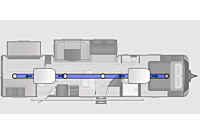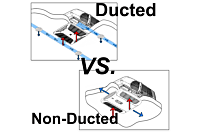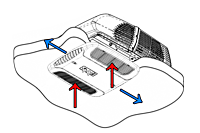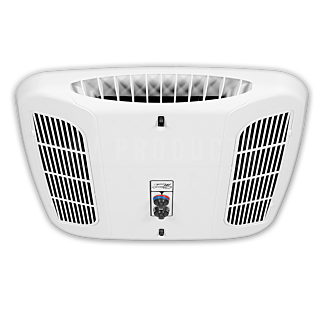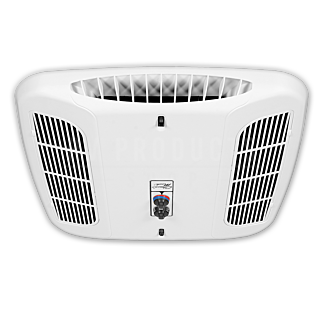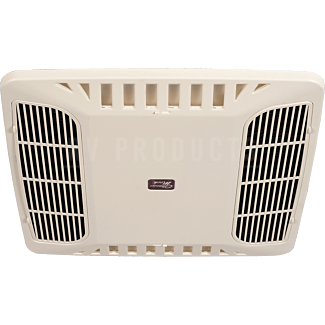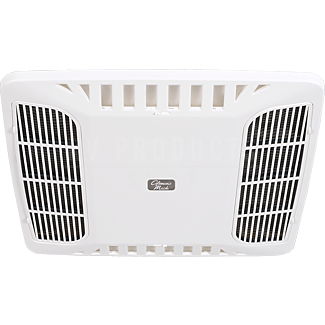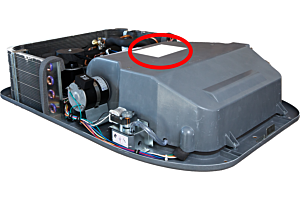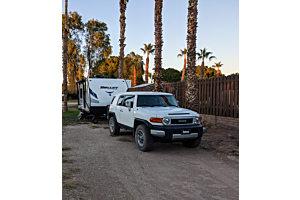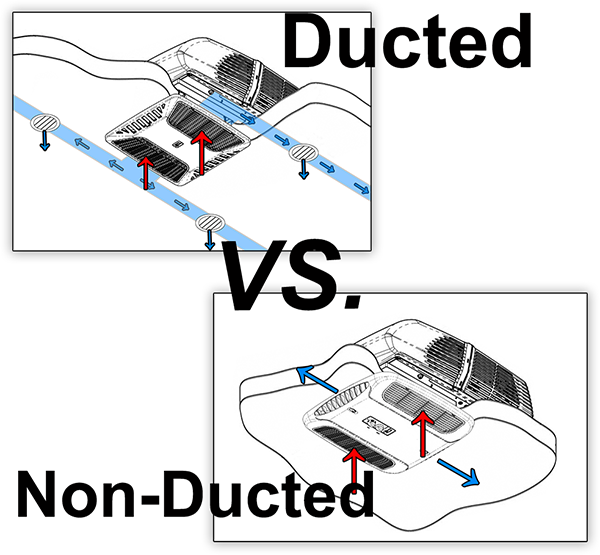
Ducted vs. Non-Ducted: The Ceiling Assembly Matters
First and foremost, let's clarify the misconception: the rooftop air conditioner unit itself does not inherently determine whether an RV system is ducted or non-ducted. The key factor in this decision is the interior ceiling assembly. This assembly includes the configuration to direct the air through the ducted installations, or direct the air straight down & out in non-ducted installations.
In a non-ducted system, the cool air is discharged directly from the rooftop unit into the RV's interior space.
There are no ducts or vents in throughout the ceiling to distribute the air more evenly.
This setup is simpler, cost-effective, and suitable for smaller RVs or those with less need for even cooling.
There are no ducts or vents in throughout the ceiling to distribute the air more evenly.
This setup is simpler, cost-effective, and suitable for smaller RVs or those with less need for even cooling.
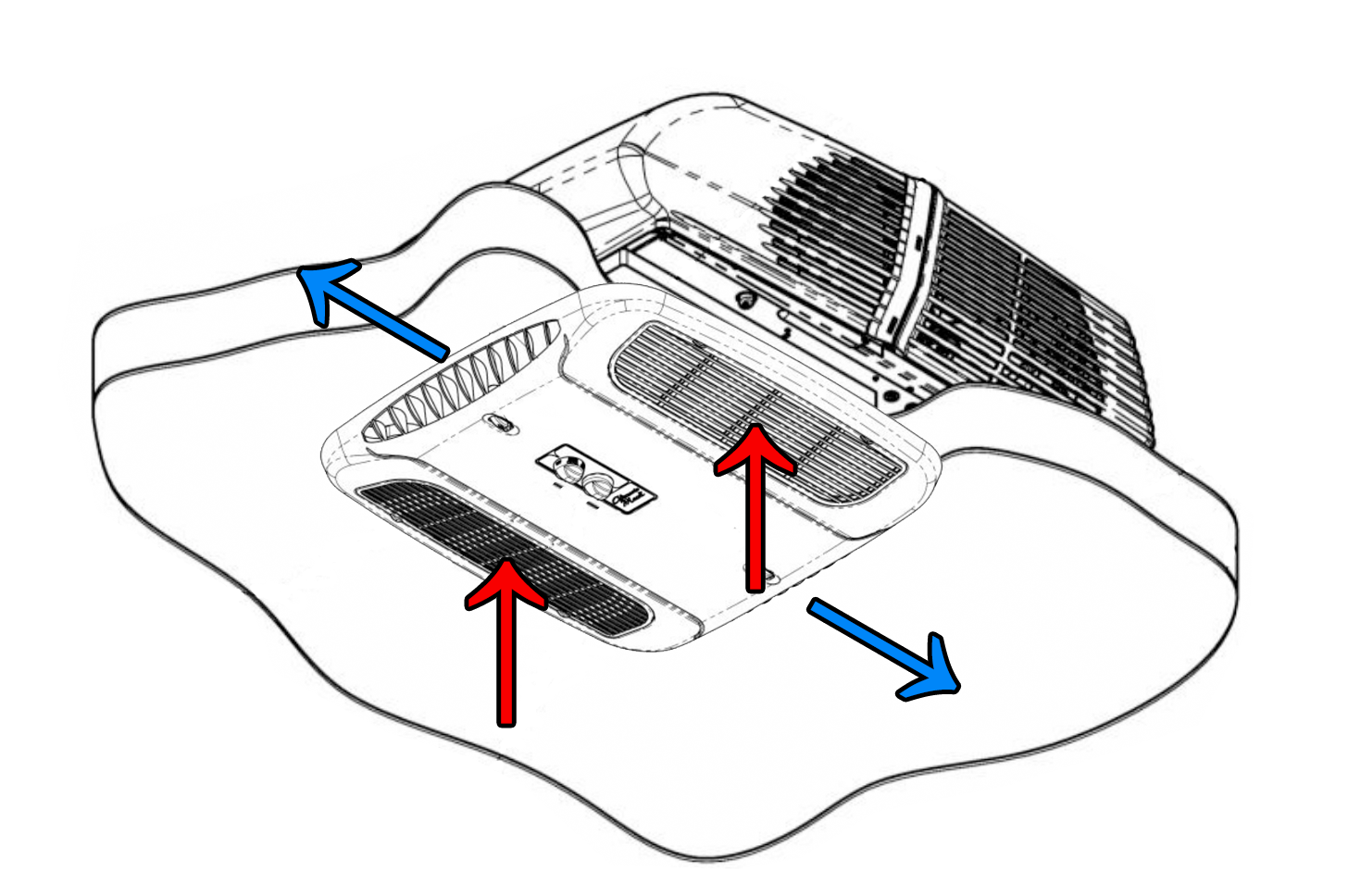

In a ducted system, the rooftop unit is connected to a network of ducts within the RV's ceiling assembly.
These ducts distribute the cool air to multiple vents located throughout the RV.
Ducted systems provide more even and consistent cooling, making them ideal for larger RVs or those seeking enhanced comfort.
Understanding Lateral and Center Ducting
These ducts distribute the cool air to multiple vents located throughout the RV.
Ducted systems provide more even and consistent cooling, making them ideal for larger RVs or those seeking enhanced comfort.
Understanding Lateral and Center Ducting
Once you've decided to go for a ducted system, it's essential to know that there are two main types of ducting setups: lateral and center ducting. Each has its unique advantages and considerations.
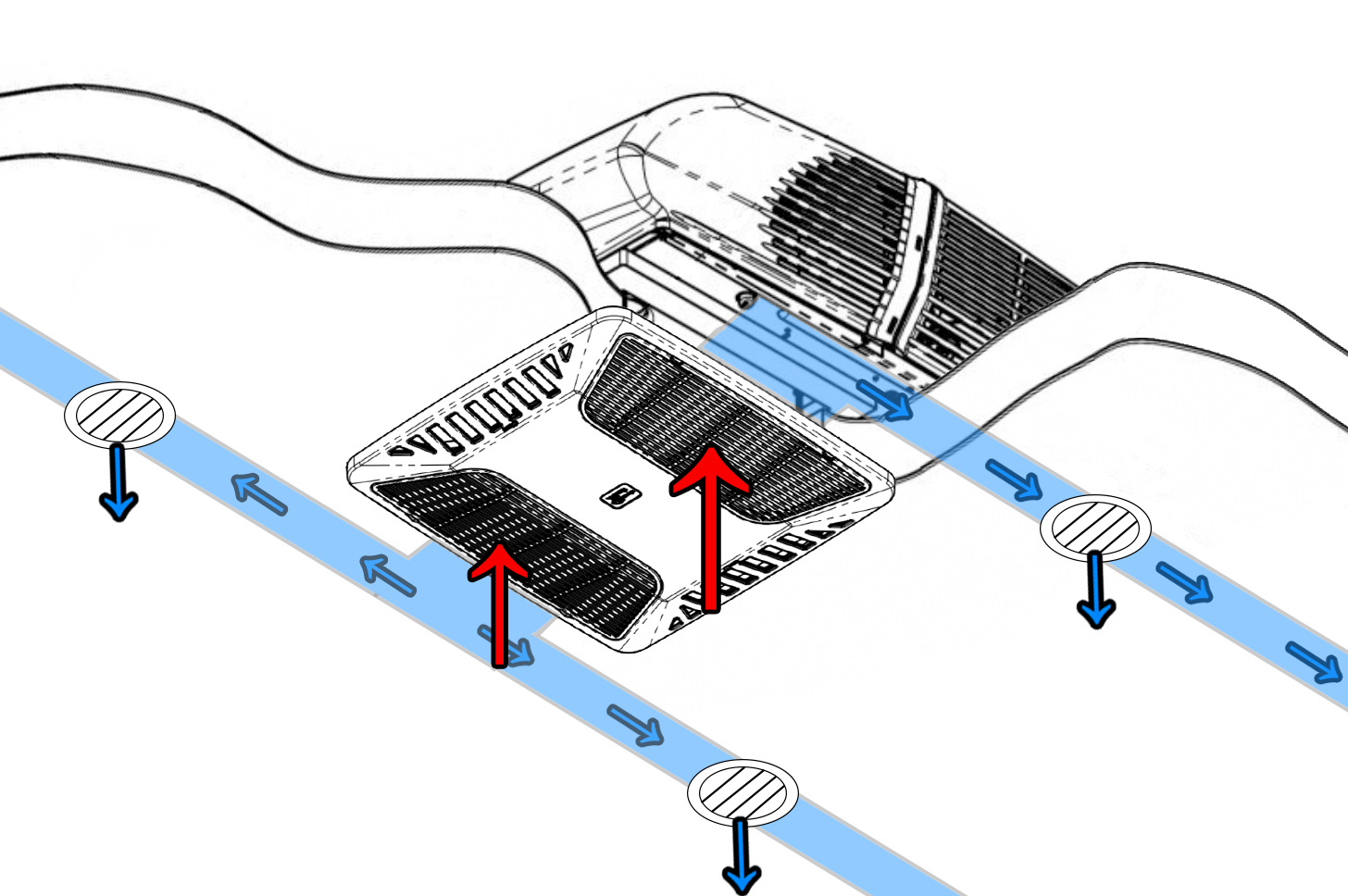

Center Ducting:
In a center ducting setup, the ductwork runs straight down the RV, in line with the air conditioner. The vents are positioned directly beneath the ducts, providing a centralized and even distribution of cool air.
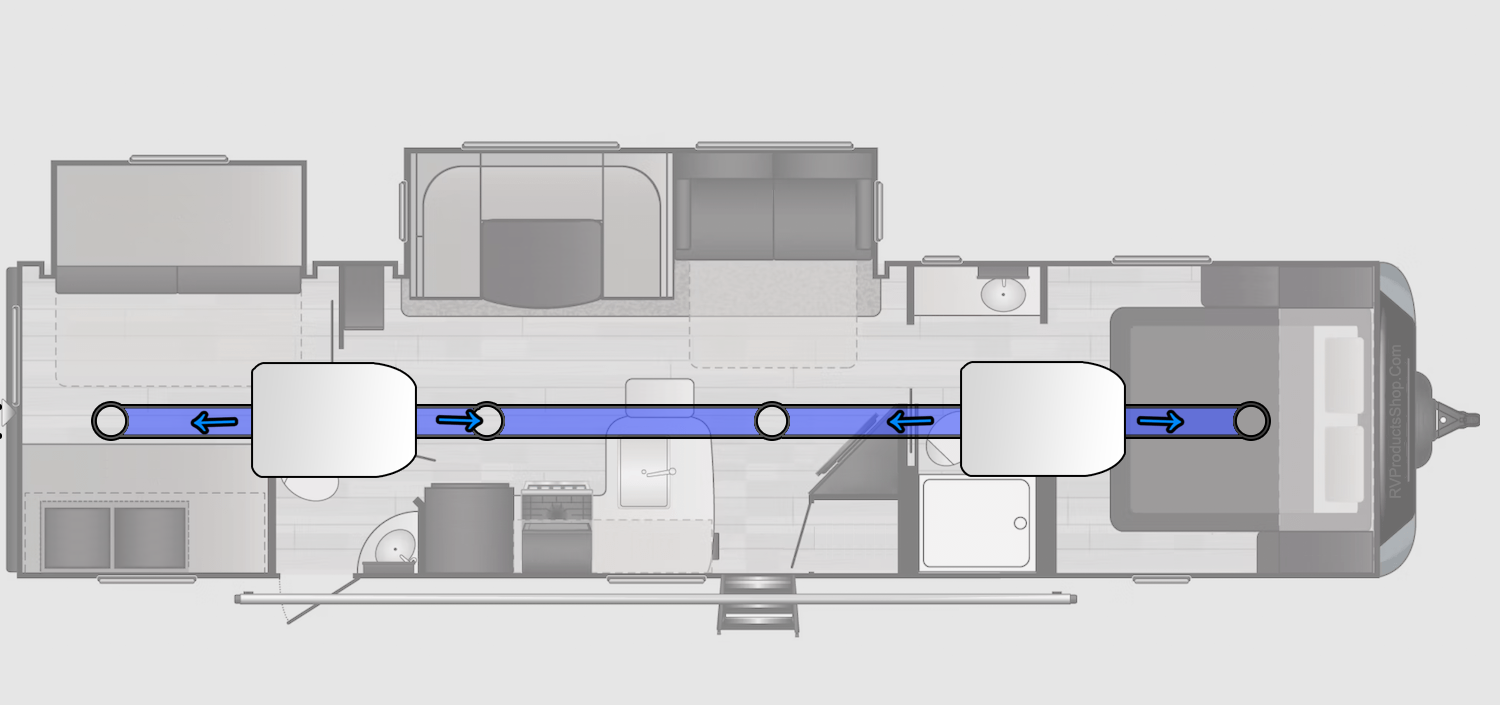

Lateral Ducting:
Lateral ducting features ductwork that runs horizontally across the RV's ceiling, with vents located on one or both sides from the center.
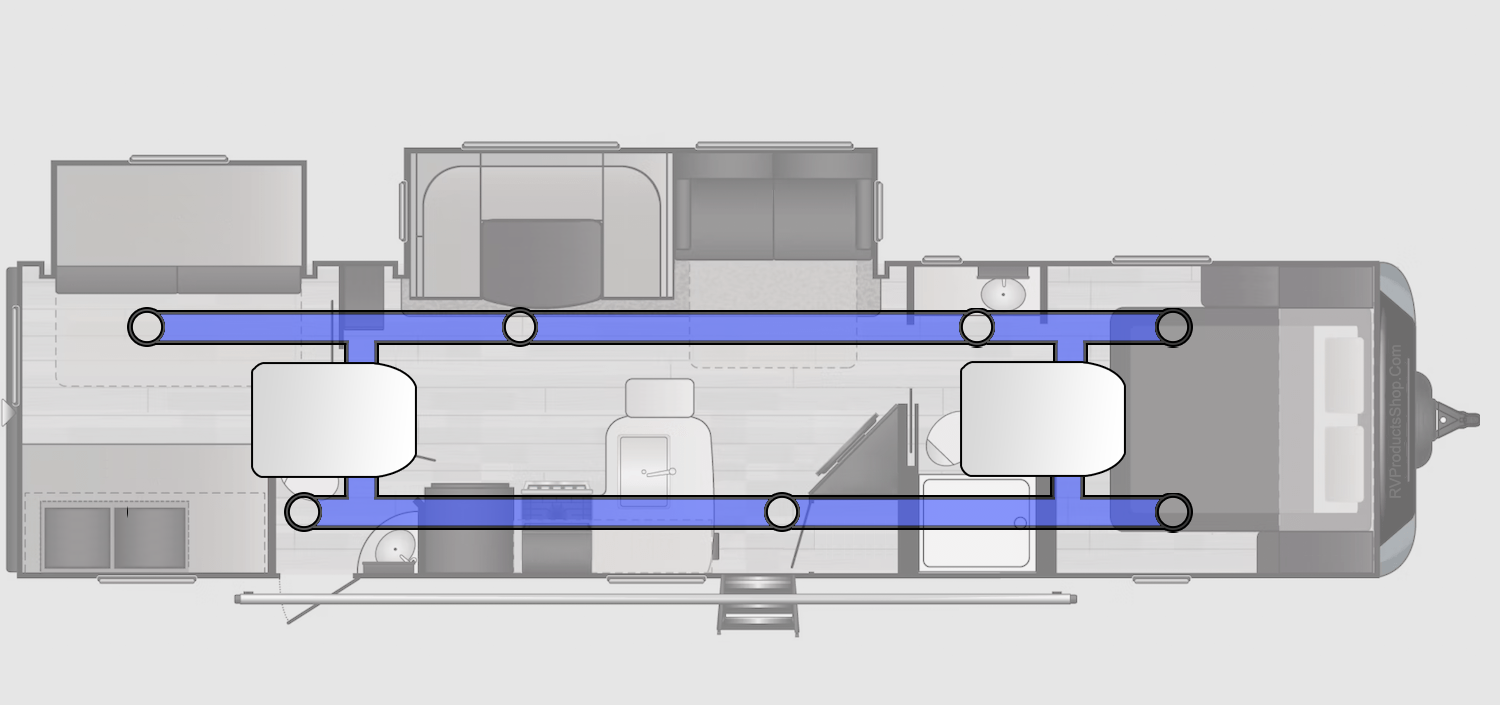

Choosing the Right Ceiling Assembly
To determine which type of ducting and ceiling assembly is right for your RV, consider the following questions:
- For new installations:
- What is the size and layout of your RV? Larger RVs often benefit from ducted systems for even cooling, while smaller RVs may find non-ducted setups sufficient.
- Do you prefer consistent cooling throughout your RV or the ability to customize airflow to specific areas? Ducted installations provides uniform cooling, while non-ducted installations cost less, can be easier to install, and are generally less complex than ducted setups.
- Are you retrofitting or replacing an existing system? Ensure compatibility with your RV's current setup to avoid unnecessary modifications.
In summary, when it comes to RV rooftop air conditioners, it's essential to understand that the ducting setup is determined by the interior ceiling assembly, not the rooftop unit itself. Ducted systems offer better airflow control and even cooling. By considering your RV's size, layout, and cooling preferences, or the RV's existing setup, you can select the right ceiling assembly and ducting setup for a comfortable and enjoyable travel experience. Feel free to reach out to us if you have any questions or concerns!

